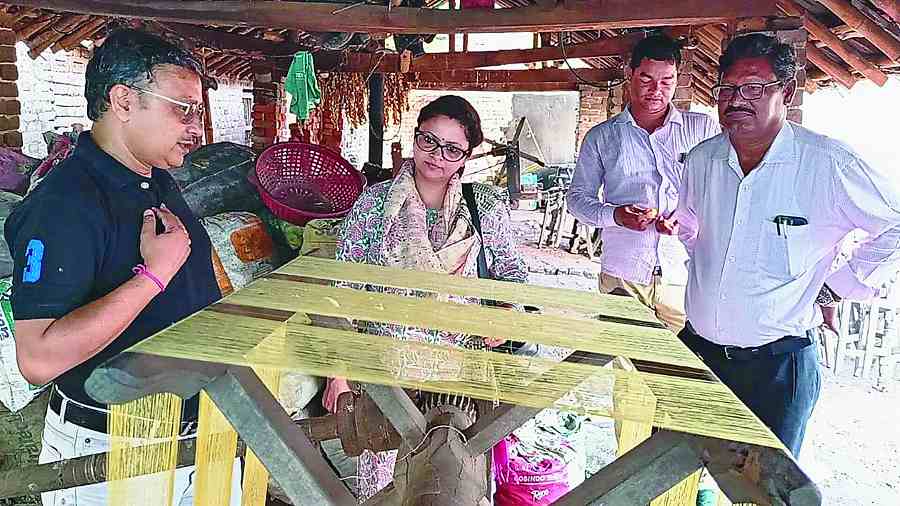Silk producers based in Malda have demanded at least one processing unit be set up in the district and sought arrangements to protect cocoons from which the yarn is made.
The demand was raised during a recent visit of a three-member delegation led by a Niti Aayog representative and a state official to some villages in Malda where silk is produced.
Although the delegation did not officially make any promise on the demands, they assured the silk farmers that what they sought would be placed before the central government with proper elaboration.
Sources said around 21,000 hectares were used for silk production in Malda, which produced around 1,500 metric tonnes of silk yarn annually.
“Around 50,000 families are engaged in the production of silk in Malda. However, in the absence of any processing and garment manufacturing unit, we sell the yarn to buyers from south Indian states. That is why we have demanded that the Centre set up a silk processing unit in the district,” said Mohammad Sarif Ali, a representative of the Malda District Silk Yarn Producers’ Association.
According to him, silk producers are based in blocks Kaliachak-I, II and III, Manikchak, Chanchal and Harischandrapur-I of Malda.
During their visit on May 4, the Niti Aayog-led team went to villages Nobinagar, Alinagar and Gayeshbari of Kaliachak-I block where hundreds of families live on silk production.
The delegation, which included two scientists from the Central Silk Board under the Union textile ministry, interacted with silk farmers to know the details of silk production in Malda and how they market their produce.
Sheikh Hasinuddin, a silk farmer based in Nobinagar, said that before the pandemic, they used to earn around Rs 350 for a kilo of yarn.
“During the past two years, the price went down to Rs 250 which left many of us distressed. Over the past few months, the price has increased to Rs 400. If processing and production units are set up here, we can have more buyers and the prices would be steady,” he said.
Another farmer from Alinagar said garment units can also create more jobs in the district to encourage more farmers to start silk production.
“We do not have well equipped processing units where silk threads of varied colours are made. Such units can create employment for hundreds of local youths right at home. They don't have to migrate,” he said.
Silk farmers appeared satisfied with the interaction.
“We have been told that the team would place certain proposals before the Centre. This sector deserves the attention of the silk board and the textile ministry,” said Ali.











